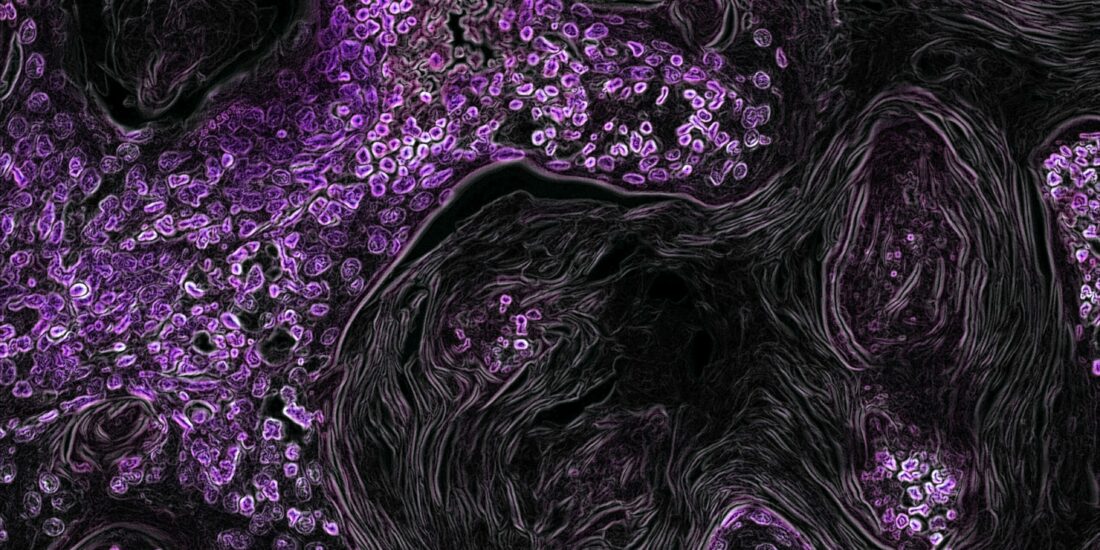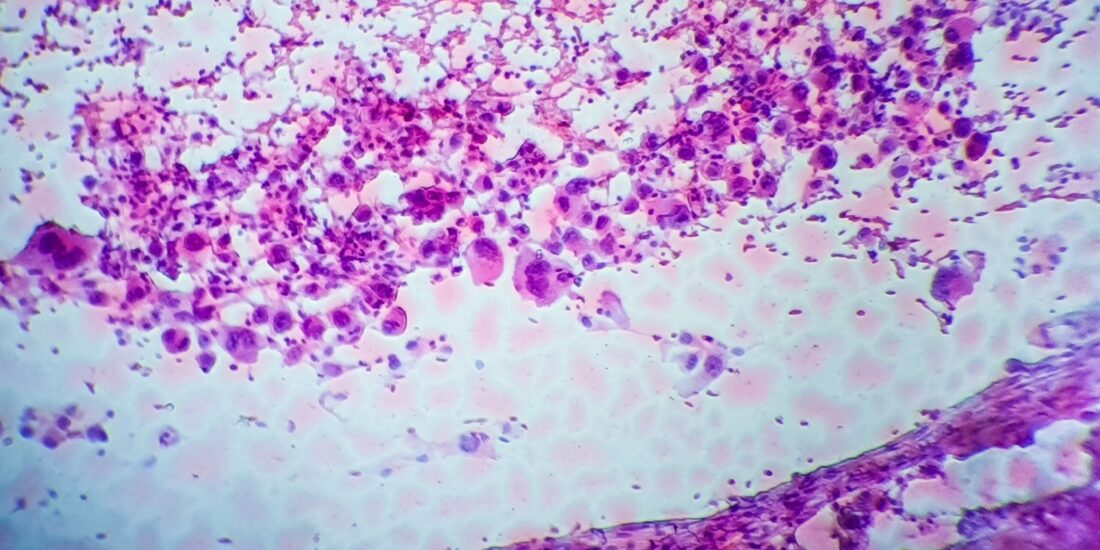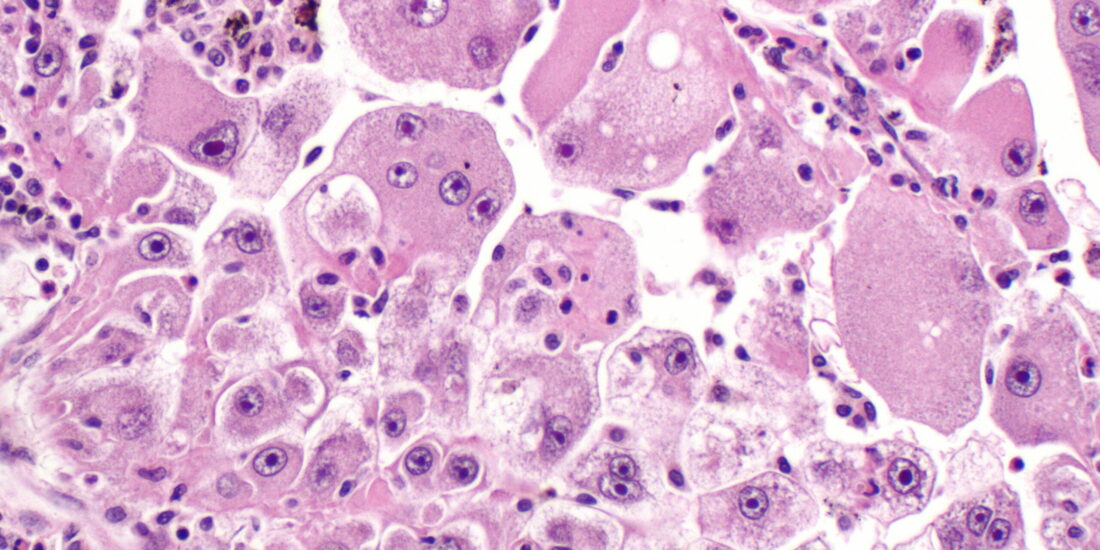A011, a novel small-molecule ligand of σ2 receptor, potently suppresses breast cancer progression via endoplasmic reticulum stress and autophagy
By Yuyun Li, Xiaoyang Xie, Shiyi Liao, Zhanwei Zeng, Siyan Li, Baocheng Xie, Qunfa Huang, Huan Zhou, Chenhui Zhou, Jiantao Lin, Yunsheng Huang, and Daohua Xu Excerpt from the article published in Biomedicine & Pharmacotherapy, Volume 152, 2022, 113232, DOI:https://doi.org/10.1016/j.biopha.2022.113232. Editor’s Highlights The σ2 receptor ligand compound A011 had no measurable affinity for σ1 receptor (Ki > […]
Continue ReadingSigma-1 Receptor Modulation by Ligands Coordinates Cancer Cell Energy Metabolism
By Furkan E. Oflaz, Zhanat Koshenov, Martin Hirtl, Rene Rost, Roland Malli, and Wolfgang F. Graier Excerpt from the article published in Biomolecules. 2022; 12(6):762. DOI https://doi.org/10.3390/biom12060762 Editor’s Highlights Sigma-1 Receptor (S1R) is an integral membrane protein, a unique ligand-activated chaperone, localized to the endoplasmic reticulum (ER) and highly enriched in specialized regions named mitochondria-associated […]
Continue ReadingOrder through destruction: how ER-associated protein degradation contributes to organelle homeostasis
By John C Christianson and Pedro Carvalho Excerpt from the article published in The EMBO Journal (2022)41:e109845 DOI: https://doi.org/10.15252/embj.2021109845 Editor’s Highlights As a large, multifunctional organelle, the endoplasmic reticulum (ER) houses robust protein quality control systems, on which it relies heavily. The best-characterized protein quality control system of the ER is the ubiquitin-proteasome-dependent process of […]
Continue ReadingNew Pharmacological Strategies against Pancreatic Adenocarcinoma: The Multifunctional Thiosemicarbazone FA4
By Dario P. Anobile, Mauro Niso, Adrian Puerta, Stephanie M. Fraga Rodrigues, Francesca S. Abatematteo, Amir Avan, Carmen Abate, Chiara Riganti, and Elisa Giovannetti Excerpt from the article published in Molecules 2022, 27, 1682. DOI: https://doi.org/10.3390/molecules27051682 Editor’s Highlights Pancreatic ductal adenocarcinoma (PDAC) represents about 95% of all types of pancreatic cancer and is characterized by aggressive […]
Continue ReadingPERK, Beyond an Unfolded Protein Response Sensor in Estrogen-Induced Apoptosis in Endocrine-Resistant Breast Cancer
By Ping Fan and V. Craig Jordan Excerpt from the article published in Molecular Cancer Research, 1 February 2022; 20 (2): 193–201. https://doi.org/10.1158/1541-7786.MCR-21-0702 Editor’s Highlights Sigma-1 receptor (Sig1R), an endoplasmic reticulum-resident membrane protein, stabilizes IP3R and highly interacts with the chaperone protein GRP78 to regulate Ca2+ exchange at MAMs. Overexpression of Sig1R suppresses PRK-like endoplasmic reticulum kinase (PERK) […]
Continue ReadingORAI1 regulates sustained cytosolic free calcium fluctuations during breast cancer cell apoptosis and apoptotic resistance via a STIM1 independent pathway
By John J Bassett , Mélanie Robitaille, Amelia A Peters, Alice H L Bong , Meng-Wong Taing, Ian A Wood, Francisco Sadras, Sarah J Roberts-Thomson, and Gregory R Monteith Introduction to the article published in FASEB J. 2022 Jan;36(1):e22108. DOI: 10.1096/fj.202002031RR PMID: 34939697. Editor’s Highlights The chaperone protein SigmaRl, the small conductance Ca2+-activated IC+ channels SK2 […]
Continue ReadingA proteome-wide map of 20(S)-hydroxycholesterol interactors in cell membranes
By Yu-Shiuan Cheng, Tianyi Zhang, Xiang Ma, Sarida Pratuangtham, Grace C. Zhang, Alexander A. Ondrus, Amirhossein Mafi, Brett Lomenick, Jeffrey J. Jones, and Alison E. Ondrus Excerpt from the author manuscript published in Nature Chemical Biology 17, 1271–1280 (19 November 2021 DOI: https://doi.org/10.1038/s41589-021-00907-2 Editor’s Highlights Oxysterols (OHCs) are hydroxylated cholesterol metabolites that play ubiquitous roles in health […]
Continue ReadingSuperoxide dismutase and the sigma1 receptor as key elements of the antioxidant system in human gastrointestinal tract cancers
By Michał Skrzycki Excerpt from the article published in Open Life Sciences, vol. 16, no. 1, 2021, pp. 1225-1239. https://doi.org/10.1515/biol-2021-0124 Editor’s Highlights The Sigma-1 receptor (Sig1R) is a membrane and cytosol protein with a sequence similar to fungal C-8.7 sterol isomerase but without any other known homology with other mammalian proteins. The Sig1R is most often […]
Continue ReadingThe Sigma-2 Receptor/TMEM97 Agonist PB28 Suppresses Cell Proliferation and Invasion by Regulating the PI3K-AKT-mTOR Signalling Pathway in Renal Cancer
By Bo Zhan, Zhe Zhang, Chiyuan Piao, Xiao Dong, Yang Du, Chuize Kong, and Yuanjun Jiang Excerpt from the article published in the Journal of Cellular and Molecular Medicine, 16 November 2021 https://doi.org/10.1111/jcmm.17047 Editor’s Highlights Renal cancer is a malignancy that increases the burden of human cancers and has a poor prognosis rate, and there are […]
Continue ReadingPGRMC1 Promotes Progestin-Dependent Proliferation of Breast Cancer Cells by Binding Prohibitins Resulting in Activation of ERα Signaling
By Yingxue Bai, Marina Ludescher, Gereon Poschmann, Kai Stühler, Martine Wyrich, Julia Oles, André Franken, Mahdi Rivandi, Anna Abramova, Florian Reinhardt, Eugen Ruckhäberle, Dieter Niederacher, Tanja Fehm, Michael A. Cahill, Nadia Stamm, and Hans Neubauer Excerpt from the article published in Cancers 2021, 13, 5635. 11 November 2021, DOI: https://doi.org/10.3390/cancers13225635 Editor’s Highlights Progesterone receptor membrane component 1 […]
Continue Reading









